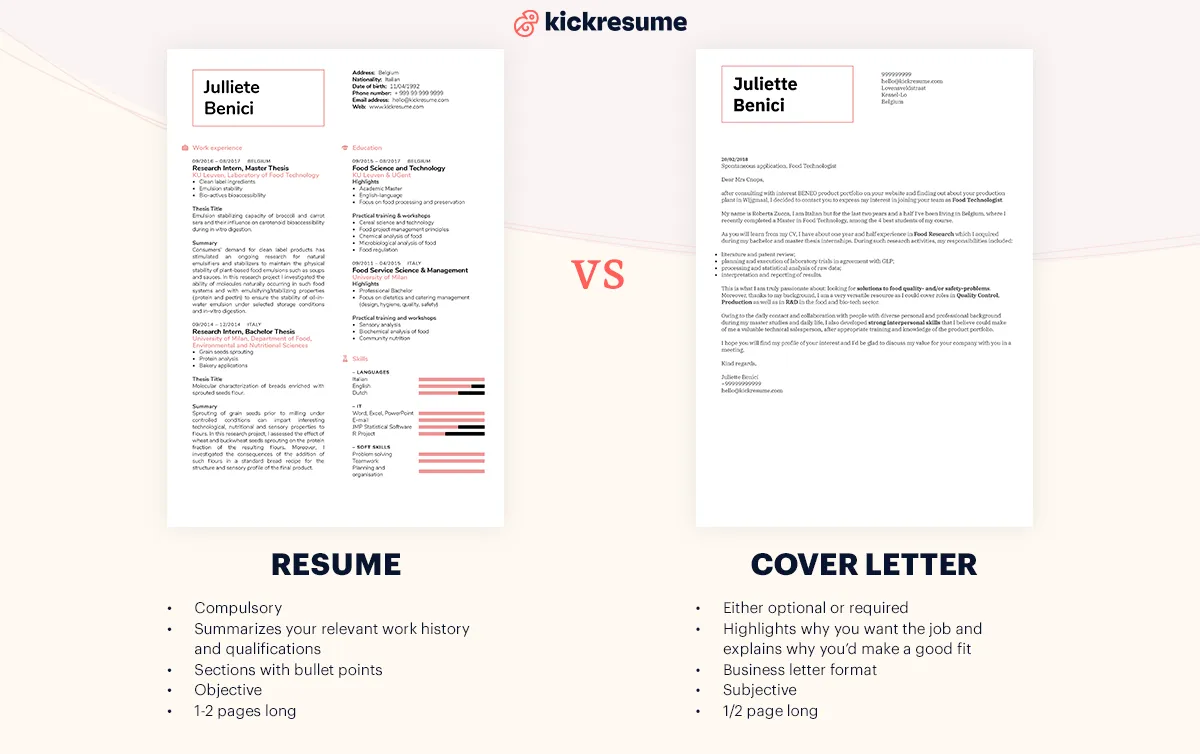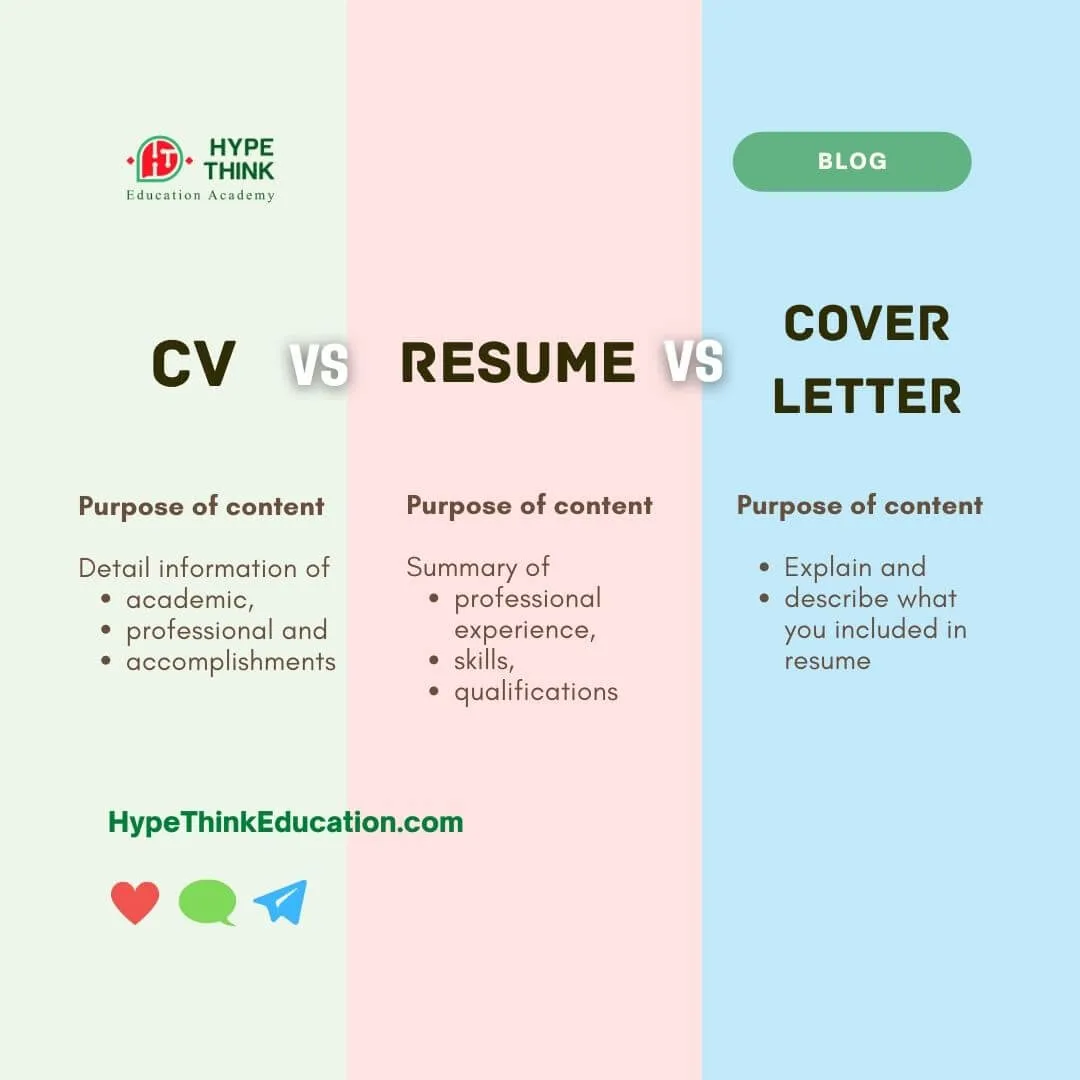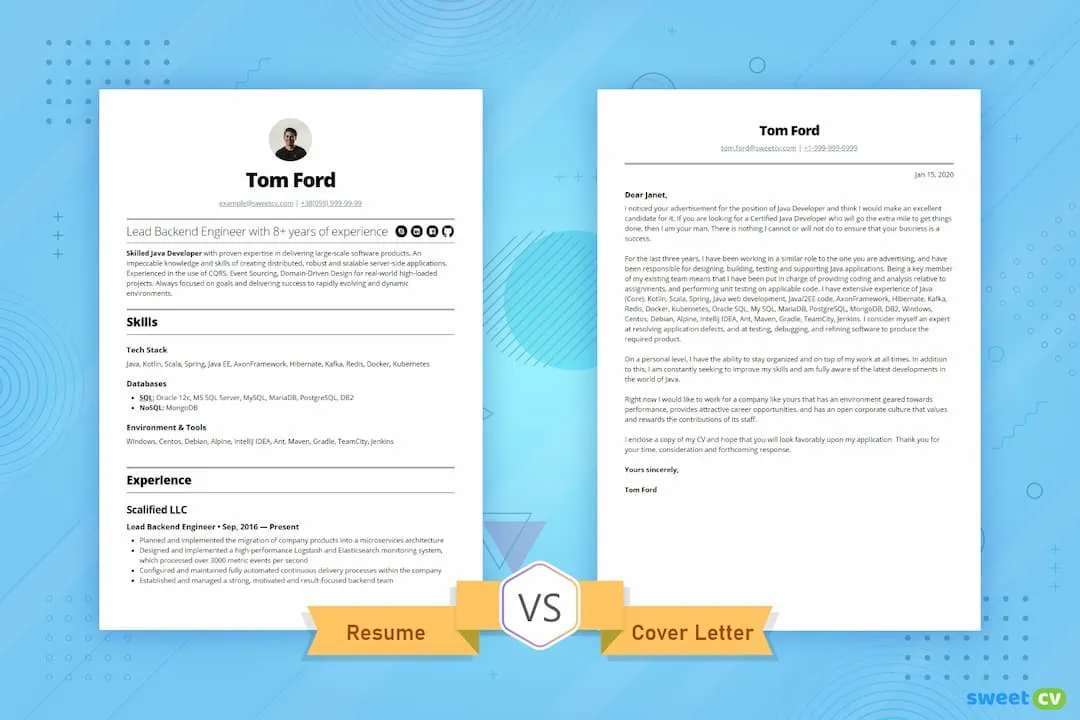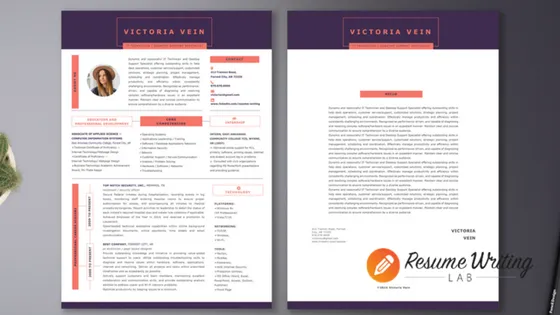Understanding the Resume, CV, and Cover Letter
Navigating the job search process can feel like learning a new language, with terms like ‘resume,’ ‘CV,’ and ‘cover letter’ often causing confusion. These documents are all critical for presenting yourself to potential employers, but they serve distinct purposes and require different approaches. Understanding the nuances between a resume, a curriculum vitae (CV), and a cover letter is fundamental to tailoring your application materials effectively. This article will break down the key differences and provide actionable insights to help you create compelling documents that get you noticed by hiring managers. This will help you when you are applying for the jobs, because you will understand what you need to prepare, and how to prepare it.
Key Differences in Purpose and Use
The core function of each document sets them apart. A resume acts as a concise snapshot of your skills, experience, and achievements, designed to quickly grab an employer’s attention and secure an interview. It is a marketing document, designed to highlight your suitability for a specific job. A CV, on the other hand, is a comprehensive record of your entire academic and professional history. It’s detailed, often lengthy, and commonly used in academia, research, and medical fields. The cover letter is a personalized introduction, intended to explain why you’re a great fit for a particular role and company, elaborating on your qualifications and expressing your enthusiasm. Each of these documents has their own purposes, and knowing them is the key to a great job application.
Focus and Content Comparison

The content of each document is tailored to its purpose. A resume typically emphasizes relevant skills and experiences, quantifying achievements whenever possible. It focuses on the most recent and pertinent information, often omitting less relevant experiences to keep it concise. A CV, conversely, offers a detailed account, including publications, presentations, research experience, and academic honors. It’s an exhaustive document that provides a complete picture of your professional and academic journey. The cover letter complements the resume by showcasing your personality, explaining your interest in the specific role, and highlighting how your skills and experiences align with the job requirements and company values. It provides a more personal and persuasive narrative.
Resume vs. CV Which to Use?
Deciding between a resume and a CV hinges on the job and industry. In the United States, a resume is the standard for most jobs, especially in business, technology, and marketing. It’s concise and targeted to the specific role. A CV is typically required for academic positions, research roles, and certain medical fields, providing a complete overview of your credentials. If the job posting doesn’t specify which to submit, it’s generally safest to follow the industry standard or use a resume. When in doubt, research the company culture and the expectations for similar roles to inform your decision. You can always reach out to the hiring manager and ask about the preferred documentation.
Cover Letters Why They Matter
While a resume or CV provides a summary of your qualifications, a cover letter gives you the opportunity to tell your story. It allows you to explain why you’re interested in the specific role and company, and to highlight the experiences and skills that make you a strong candidate. A well-written cover letter can showcase your personality, communication skills, and enthusiasm, setting you apart from other applicants. It should demonstrate that you’ve researched the company and understand its mission. In today’s competitive job market, a compelling cover letter is often essential for securing an interview, especially for roles where soft skills and cultural fit are highly valued. It demonstrates your interests and passions, and helps with your job application.
Formatting and Length Variations

Formatting and length vary significantly among these documents. A resume is typically one to two pages long, employing clear formatting, bullet points, and concise language to present information efficiently. Emphasis is placed on readability and ease of scanning. A CV can be several pages, depending on the depth of your experience and academic record, often including detailed sections for publications, presentations, and research projects. The formatting may be more extensive to accommodate the comprehensive content. A cover letter, ideally, is limited to one page, with a professional and engaging tone. It utilizes a formal business letter format, with clear paragraphs that convey your interest, qualifications, and value to the employer.
Resume Formatting
When formatting a resume, prioritize readability and clarity. Use clear headings for sections like ‘Contact Information,’ ‘Summary/Objective,’ ‘Experience,’ ‘Skills,’ and ‘Education.’ Employ bullet points to highlight key accomplishments and responsibilities within each role. Choose a professional font like Arial, Calibri, or Times New Roman in a readable size (10-12 points). Maintain consistent margins and spacing throughout the document. Tailor the formatting to the industry or the specific job requirements. Proofread carefully to eliminate errors and ensure a polished presentation. The resume is the first impression that you are going to make, and it must be top tier.
CV Formatting
A CV’s formatting should be organized to highlight your credentials and achievements. Include detailed sections for education, research experience, publications, presentations, grants, and awards. Clearly label each section and provide dates, institutions, and specific details for each entry. The format should be clean and professional, using a readable font and consistent spacing. You should order your CV with your most impressive achievements at the top to show your best foot forward, with a clear summary, and an objective of what you are trying to accomplish.
Cover Letter Formatting

The cover letter should follow a formal business letter format. Begin with your contact information, the date, and the recipient’s details. Use a professional salutation, such as ‘Dear Mr./Ms. [Last Name].’ Structure your letter in clear paragraphs, starting with an engaging introduction. Followed by an explanation of your interest and relevant qualifications, and concluding with a call to action. Maintain a professional tone and avoid slang. Proofread your cover letter multiple times to eliminate errors. A good cover letter gives you a good chance of being hired, it shows your best side, and allows for a great explanation on why you are the best person for the job.
Targeting the Right Audience
Each document targets a different audience. A resume is geared toward recruiters and hiring managers, so it should be tailored to highlight the skills and experiences most relevant to the specific job. A CV is generally intended for academic committees, research institutions, or other professionals familiar with academic standards. It is detailed. A cover letter is written to the hiring manager, demonstrating your understanding of their needs and why you’re the best fit for the role. Always adapt your documents to resonate with the reader, emphasizing what’s most important to them. Know your audience and it will help you in the process of being hired.
The Role of a Resume
The role of the resume is to secure an interview by showcasing your skills, experiences, and accomplishments in a concise and compelling manner. It serves as a marketing document that highlights the value you bring to a potential employer. A well-crafted resume captures the recruiter’s attention within seconds and quickly demonstrates why you’re qualified for the job. By focusing on relevant information and quantifying your achievements, the resume helps you stand out from other candidates. The ultimate goal of a resume is to get you an interview, and then hopefully a job.
The Role of a CV

A CV serves a different purpose. Its role is to provide a comprehensive overview of your academic and professional history, typically used in academia, research, and medicine. It provides a detailed record of your education, publications, research experience, grants, and awards. This detailed document allows potential employers to evaluate your expertise and contributions to your field. A CV showcases your entire career and academic journey. It is important to have a CV on the ready for your potential job opportunities.
The Role of a Cover Letter
A cover letter enhances your application by telling your story. It’s your opportunity to introduce yourself, express your interest in the role, and demonstrate why you’re the perfect candidate. A cover letter allows you to expand on your qualifications, showcase your personality, and articulate how your skills align with the job requirements and company culture. It also shows your writing and communication skills. In today’s competitive job market, a well-written cover letter can significantly increase your chances of getting an interview. Make sure you write a good cover letter.
Tips for Writing Effective Documents
To make your documents effective, tailor each to the specific job or opportunity. Start by researching the job requirements and company culture. Then, highlight relevant skills and experiences and quantify your achievements whenever possible. Proofread each document carefully to eliminate errors. Keep your language concise and professional, and ensure the formatting is clean and easy to read. Seek feedback from trusted sources, such as career counselors or mentors. By following these tips, you will create a professional, attention-grabbing document, and have more opportunities to be hired.
Resume Writing Tips

When writing a resume, focus on using action verbs to describe your accomplishments. Quantify your achievements whenever possible by including data, numbers, or percentages to show your impact. Tailor your resume to each job application by highlighting the skills and experiences most relevant to the position. Keep your resume concise, usually one to two pages. Consider adding a summary or objective section to quickly capture the recruiter’s attention. Make sure to proofread thoroughly for any errors.
CV Writing Tips
Crafting a CV requires detail and thoroughness. Include a detailed education section, including the name, location, and dates. Provide comprehensive descriptions of your research projects, publications, presentations, and grants. Organize your CV logically, using clear headings and subheadings to make the information easy to find. Ensure your CV is up-to-date and reflects your most current accomplishments. Get feedback from peers to ensure its quality.
Cover Letter Writing Tips
A compelling cover letter should be personalized to the specific job and company. Start by expressing your interest in the role and explaining why you’re a good fit. Highlight your skills and experiences, and how they align with the job requirements. Research the company to demonstrate your understanding of its mission and values. Show your enthusiasm for the opportunity, and always proofread your letter before submitting it. Remember that a good cover letter will always open a door for you.
When to Use a Resume

Generally, a resume is used for most job applications in the United States, particularly in business, technology, marketing, and other non-academic fields. It’s designed to showcase your skills and experiences in a concise format that appeals to recruiters and hiring managers. If a job posting doesn’t specify whether to submit a resume or a CV, it’s typically safe to submit a resume. Tailor your resume to match the job description, highlighting relevant skills and experience. Using a resume will open a lot of doors for you.
When to Use a CV
A CV is required for academic positions, research roles, and certain medical fields. If you’re applying for a faculty position, research grant, or a position within academia or a research institution, you’ll likely need a CV. In some international settings, a CV may also be standard for professional jobs. Always check the job posting or inquire with the employer to determine which document is required. A CV gives a lot more information.
When to Use a Cover Letter
A cover letter is almost always recommended, especially when applying for a job. It is a valuable opportunity to personalize your application, explain your interest in the role, and highlight how your skills and experiences make you a strong candidate. A well-written cover letter showcases your communication skills and enthusiasm, setting you apart from other applicants. Customize your cover letter for each job you apply for, demonstrating that you understand the company’s needs and are a great fit. A cover letter can be very helpful.
Final Thoughts

Understanding the differences between a resume, CV, and cover letter is essential for a successful job search. Each document serves a distinct purpose and requires a tailored approach. The resume is a concise overview, the CV is a comprehensive record, and the cover letter is your opportunity to make a personal connection. By mastering the nuances of these documents, you can create application materials that effectively showcase your skills, experience, and enthusiasm, increasing your chances of landing your dream job. Proper preparation will get you far in your job search. Good luck!
